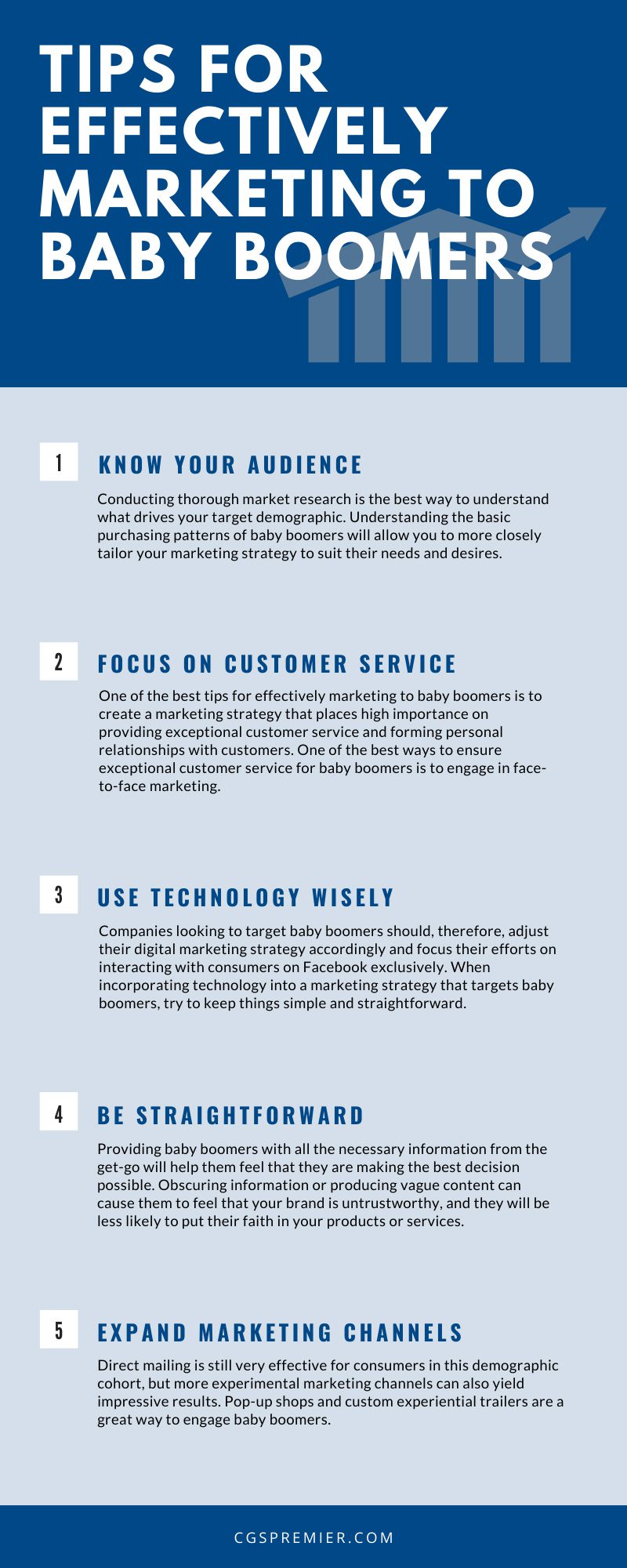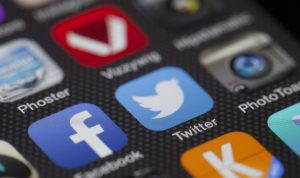Tailoring your company’s marketing strategy to appeal to a specific demographic is one of the best ways to ensure the success of your products and services. Though this strategy can be highly beneficial, the execution sometimes falls a bit flat. Many companies tailor their marketing strategies to appeal to younger generations exclusively, typically targeting individuals in the Millennial or Generation Z demographic cohorts. In placing so much importance on younger individuals, many companies fail to recognize the power of older consumers—specifically those within the Baby Boomer demographic cohort. Baby Boomers make up a large portion of the United States population and can have a significant impact on current consumer trends. A company should, therefore, never overlook the buying patterns and preferences of baby boomers. These tips for effectively marketing to baby boomers will help you better tailor your current strategy to appeal to the preferences of older consumers.
Know your audience
The key to a successful marketing strategy is understanding the wants and needs of your target demographic. Purchasing preferences and patterns can change drastically depending on the age, gender, and socioeconomic background of each consumer. Conducting thorough market research is the best way to understand what drives your target demographic. Plus, it will enable you to tailor your marketing strategy more closely to the needs of your specific audience. The baby boomer generation consists of older individuals born between 1946 and 1964. Individuals in this demographic have become credited with the rise in consumerism in the United States and were typically wealthier and more active than their predecessors. Though they have a larger disposable income than other generations, baby boomers still view shopping as a purely practical activity, unlike some younger demographics who view it as a recreational activity. Because they view shopping as a practical pastime, they are less likely to spend time browsing or exploring new products and are more likely to stick to products and brands that they’re familiar with. Understanding the basic purchasing patterns of baby boomers will allow you to more closely tailor your marketing strategy to suit their needs and desires. As such, they will be more likely to interact with your brand on a regular basis.
Focus on customer service
Above all else, baby boomers value customer service. While customer service can make or break a sale for almost any consumer, it can be especially important to baby boomers. Members of this demographic are more likely to abandon a purchase following poor customer service than any other demographic cohort. As such, one of the best tips for effectively marketing to baby boomers is to create a marketing strategy that places high importance on providing exceptional customer service and forming personal relationships with customers. One of the best ways to ensure exceptional customer service for baby boomers is to engage in face-to-face marketing. Baby boomers are more likely to shop in brick and mortar stores than younger generations and prefer speaking to a sales associate in person rather than over the phone or email. Speaking with a sales associate in person allows the individual to form a personal connection with the brand and have all their questions answered in real-time, rather than having to wait on hold for a customer representative. Baby boomers feel more comfortable placing their trust in a company that they form a personal connection with and will be more likely to return to a business in which they received exceptional customer service.
Use technology wisely
Unlike Millennials who grew up alongside massive technological advances and to whom technology comes rather easily, baby boomers have taken a bit longer to adapt to the digital age. This is not to say, however, that baby boomers do not engage in social media and online shopping. On the contrary, many baby boomers are incredibly active on social media and spend an average of one hour and 48 minutes on social media sites every day. However, because baby boomers are not as tech-savvy as younger generations, they tend to limit their digital interactions mainly to Facebook. Companies looking to target baby boomers should, therefore, adjust their digital marketing strategy accordingly and focus their efforts on interacting with consumers on Facebook exclusively. Facebook is a very beneficial way to market to baby boomers as it allows the consumer to engage in a one-on-one conversation with the brand in situations where face-to-face marketing is otherwise unavailable. When incorporating technology into a marketing strategy that targets baby boomers, try to keep things simple and straightforward. This will allow for the best digital customer service experience possible for the consumer.
Be straightforward
Baby boomers are not ones to beat around the bush. As such, your marketing strategy should be as clear and straightforward as possible. Copy and content should explain the key details of a product or service and should provide a clear understanding of how the product could improve the life of the consumer. Providing baby boomers with all the necessary information from the get-go will help them feel that they are making the best decision possible. Obscuring information or producing vague content can cause them to feel that your brand is untrustworthy, and they will be less likely to put their faith in your products or services.
Expand marketing channels
Baby boomers may have grown up with more traditional marketing styles and mediums but they’re still quite open to newer marketing channels. Direct mailing is still very effective for consumers in this demographic cohort, but more experimental marketing channels can also yield impressive results. Experiential marketing, for example, can be quite beneficial in marketing to baby boomers. This is because it marries their preference for brick-and-mortar shopping with their desire for exceptional customer experience and in-person interactions. Pop-up shops and custom experiential trailers are a great way to engage baby boomers. They allow the consumer to interact with the products and speak directly with brand representatives in a very personal setting. Baby boomers are less inclined to browse and experiment with new items than younger generations are. Presenting products and services in a more intimate, customer-focused setting, therefore, makes the shopping experience a bit more palatable to baby boomers. They will feel more comfortable asking questions and will be able to form a closer personal connection with the brand which will help foster stronger brand loyalty and trust.





